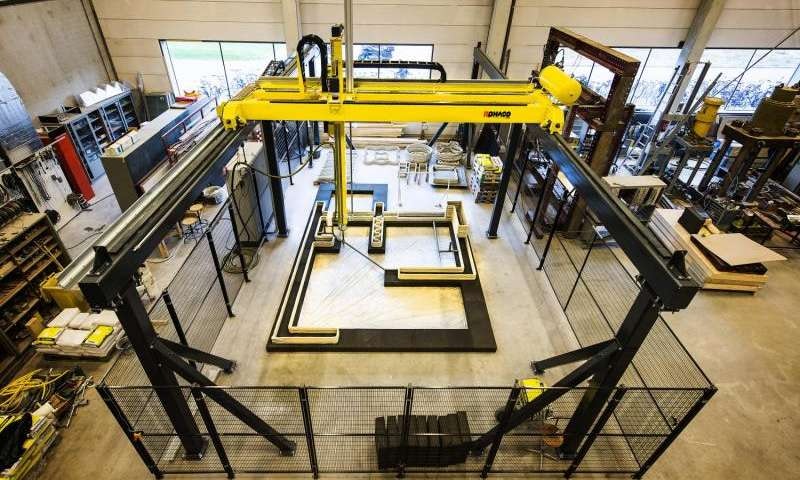3D printing is a concept that is unfamiliar to many people working within the construction industry. Innovative technology has taken massive strides over the last few years, with more and more uses being discovered by the day. Today, 3D printers are utilised to process all kinds of construction materials. Larger organisations have implemented tech into their day-to-day projects, with immense reductions in project spans being seen as a result of 3D printing.
So how exactly have 3D printers impacted the construction industry? Check out iseekplant’s comprehensive guide to 3D printing and construction below!
Find gear for modern projects
The history of 3D printing and construction.
Way back in 2004, Professor Behrokh Khoshnevis of the University of South Carolina attempted the first 3D-printed wall. Flash forward to today, and it’s possible to build a house in just 20 hours! Khoshnevis developed an FDM 3D printer, mounted onto a robotic arm, that extrudes concrete layers instead of plastic to create a 3D model.
This discovery was the beginning of 3D printing in construction, with additive manufacturing on construction sites encouraging reductions in costs and waste, faster construction speeds, reduction of accidents, more complex architectural shapes and more.
The benefits of 3D printing in construction.
1 - Flexible Design
3D printing allows for a greater scope of creativity and innovation for designers in the construction industry. Complex structures can be quickly built with 3D printers - all it takes is a keen designer.
2 - Faster Construction Times
Some aspects of projects can be streamlined through 3D printers. There are many conventional methodologies that take months to execute. The same processes may only take a few days for a 3D printer.
3 - Economical Material Usage
With additive rather than subtractive processes, fewer materials are used than traditional manufacturing processes. This reduces the environmental impact as less waste is produced. With increased geometric masteries, optimised shapes can be built, limiting the number of materials used.
How 3D printing is executed.

Also known as additive manufacturing or contour crafting, 3D printing streamlines conventional methods used in the construction industry. In laments terms, the printing process involves feeding relevant data (such as plans, blueprints, maps or dimensions) into an automated machine, which will then produce a precise physical output.
3D printing uses the SLA (stereolithography) process, which means the creation of a product is done in a layer-by-layer fashion. Building materials like beams, walls and vertical support structures can easily be 3D printed right at the construction site. More complex objects like doors and windows, plumbing and electrical systems need to be installed with the help of traditional methods.
The world’s biggest 3D-printed building
Check out the world’s largest 3D-printed building here!
To keep up to date with the latest industry, tech and project news, subscribe to iseekplant’s Constructionsht blog today!


